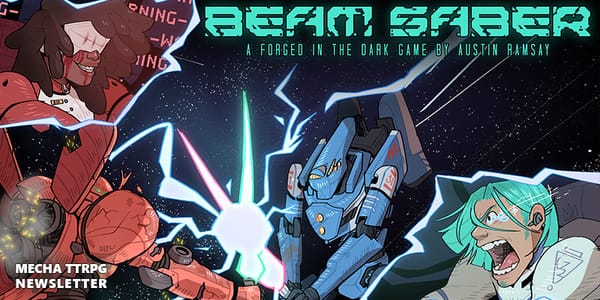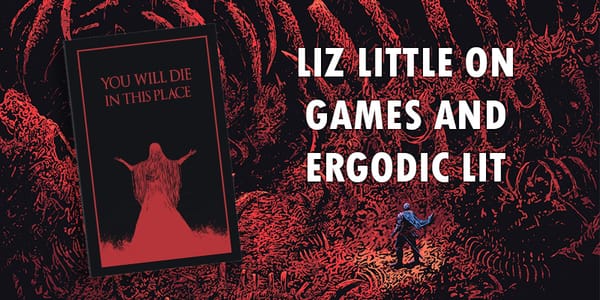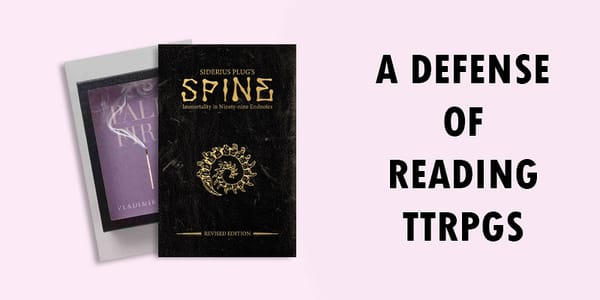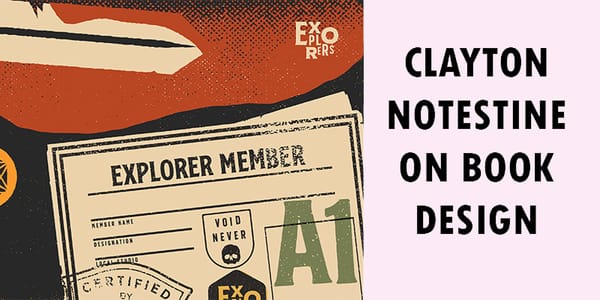Creator's Kit: Advice
Section #2 of the Creator's Kit: An Overview of advice for creating your own content for Rust Never Sleeps.
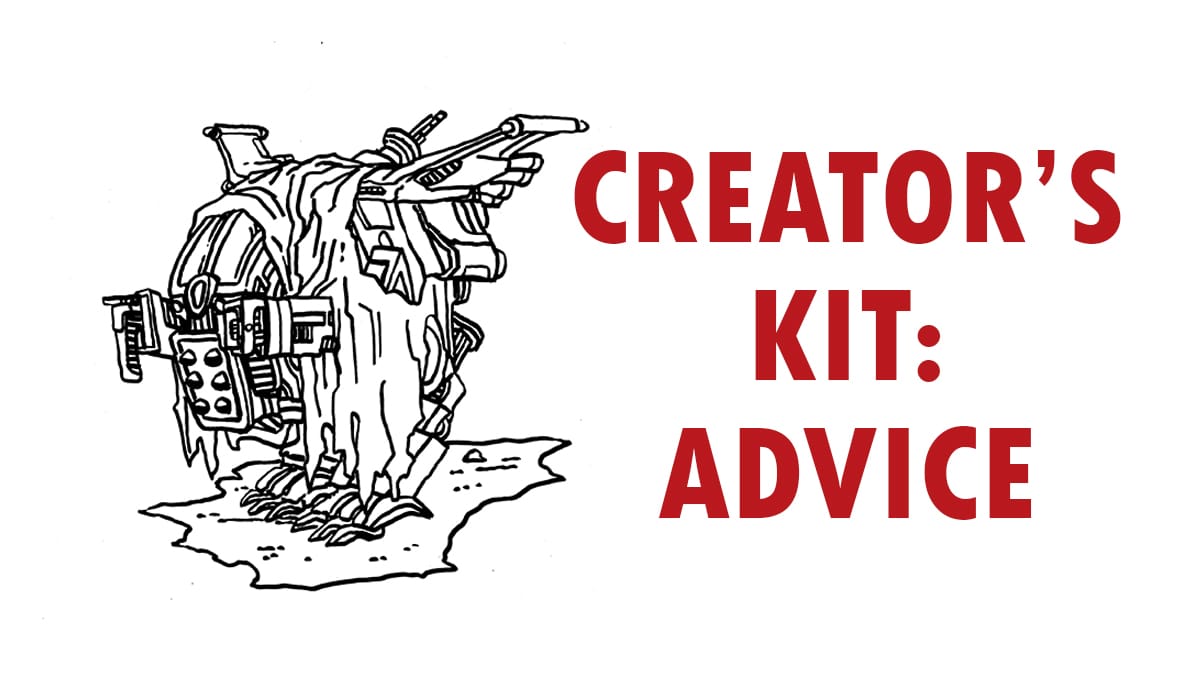
Contents
Create Your Own Mission Modules
A mission module is a pre-written story that guides you — the player — through a series of predetermined prompts or “entries.” It provides the basic plot and variations within that plot for you to follow and choose.
The Beginning
Missions typically begin with the following statement and then provide some context for the mission.
Prepare your battery pack. Your battery pack should contain no more than the standard 52 playing cards. It may have fewer cards, if you have leveled your pilot.
Open your pilot’s log. Continue your audio log or log document. Record your journal entries here.
Put in your mixtape. Remove a song of your choice from the SIDE ONE mixtape. Replace it with [Song title] by [artist]. Play this song as the opening theme for your grungebank.
When you pick a song for players to add to their playlist, try to select a song whose lyrics and music resonate thematically with the plot of your mission.
The Ending
Missions end with a “Final Report,” which instructs you to…
Reflect on the mission in a final report. As you do, answer one or more of the following:
Listen to the opening theme. What about this song seems to encapsulate the mission?
Count the number of cards in your battery pack. If you have 5 or fewer, what was it like teetering on the brink of burnout? Otherwise, what triumph brings you great pride?
There’s no rest for the wicked. What must you do with your downtime?
Mission Recommendations
Keep the plot simple.
It will be easier to write, and you can focus on certain story elements that you may not be able to otherwise.
If the plot diverges from a point — often after a success or failure at an obstacle — try to bring it back to the main thread soon after. You will be tempted to write a mission like a Choose Your Own Adventure novel with numerous twists, turns, and outcomes. Those stories are cool, but they are hard to write. Also, their focus is diffused among so many different plots that intention and detail can be lost.
Remember, simple does not have to mean short. Most mission modules have 15-20 prompts, but they can be twice as long if the story requires it. Just remember to provide an opportunity for the pilot to recharge their rustbucket.
Keep it exciting.
The most exciting missions are those in which the pilot survives but very nearly burns out in the process.
To create that experience, tally the average number of cards that the player will draw during your mission, and see if you can have players draw at least 48 cards on average before they can recharge their battery.
Remember that they can reuse some of these cards, and they will also have unexpected failures and setbacks.
As pilots grow weary with experience, their total number of cards will decrease, making the mission more deadly.
I also recommend that you don’t have too many cards drawn after the story's climax. If your pilot burns out while on their way home or during a minor task at base, you may find it anticlimactic.
I use the following numbers for my estimates:
- Task (one chance): 2 cards
- Task (repeat until successful): 3 cards
- Obstacle: Multiply the obstacle by 2.
- Challenge: Multiply the challenge by 2.
Create character drama.
Journaling games allow you to explore you character’s psychology and their relationship with other characters.
- Start a mission by incorporating a pilot who is the protagonist’s friend, and then have them stab them in the back later.
- Create a rival pilot whom the protagonist must save, much to their chagrin. Perhaps they become closer over time?
Let the players invent these backstories, imagine the dialogue, and reflect on the drama.
Double down on obstacles.
There is nothing cooler in a story when you defeat the antagonist, except when that antagonist transforms into their final form and the battle continues.
Rust Never Sleeps doesn’t have conventional combat, but it does have obstacles, which can simulate combat. Create epic fights by putting two obstacles back to back: you thought you defeated the enemy rustbucket? Sorry... They’re just getting started.
Make It Grunge.
Switch to Side Two of your mixtape for sad scenes. Switch back to Side One for most adventure, combat, and travel. Occasionally, invite the pilot to reflect on a song while it plays. Perhaps it is a specific song, whose themes align with the mission. Or perhaps you ask them to shuffle the playlist and skip to the next song.
In addition to grunge music, work in grunge themes, like social alienation, self-doubt, burnout, and betrayal. Tell stories about resisting authority or disillusionment. Incorporate grunge fashion or a gritty, distressed aesthetic.
Share your mission and sell it for cold hard cash.
I recommend charging between $2 and $4. If you share it with me, I will add it to an itch collection, share it in my newsletter, and post about it on social media. I can’t guarantee it, but there’s a good chance that I will be your first sale and first player.
Create Your Own Rustbuckets
Every rustbucket needs…
- a name and description for its model
- four types of equipment
- black-and-white art
- a list of equipment upgrades
Name & Description
The rustbucket’s model name should be evocative. Is the rustbucket focused on stealth? Then you might name it the Lynx model, after a sneaky nocturnal wildcat. Then, say as much in the rustbucket’s description along with an explanation of how its equipment meets the theme. Here is an example:
Jackrabbit. The Jackrabbit is designed for speed and travel. Although many sat nav systems no longer work without functional satellites, its transponders are state of the art, giving its pilot a sense of the surrounding landscape. If it cannot flee from enemies, it's prepared to fight using its electric prods or to hide with its camouflage technology.
Equipment
Pick four equipment types for the rustbucket. Give each piece of equipment a descriptive name and assign an equipment threshold. Distribute the following thresholds: 15, 15, 16, 17. Alternatively, you can pick your own thresholds. I recommend that they be no less than 15 and no more than 18, but you can create different experiences if you change up the range and distribution.
Here’s an example:
- Transponders (Nav System). Success Threshold: 15
- Tetrapod (Propulsion Unit). Success Threshold: 15
- Electric Prod (Melee). Success Threshold: 16
- Optical camouflage (Cloak). Success Threshold: 17
Rustbucket Art
Rustbuckets need art. This isn’t optional! The art will go in the schematic sheet, and players will color it in as they upgrade their mech. For that reason, the art is typically black-and-white line art. You can draw it yourself, repurpose open source art, or hire an artist. In fact, black-and-white line art can be very affordable.
I worked with Mac Teg and HodagRPG on the art for this project, and if you ask, they may be willing to work with you as well!
Equipment Upgrades
The last thing that a rustbucket needs is a list of upgrades for its equipment. Each piece of equipment should have three upgrades, and each upgrade should be associated with its own suit (♣ ♦ ♥), have a name, and have a special ability.
Ability Types
Some common themes among abilities include...
- Prediction or Accuracy: Looking at the top cards of your battery pack
- Energy Efficiency: Discarding into the auxiliary reserve instead of the junkyard
- Recharging: Resurrecting a card from the junkyard
- Solar Power: Special effects during the day or at night
- Boosts: Special effects when you SMACK the big red button
- Reliability: Alternative conditions for success
- Prime your Engine: Pulling specific cards from the battery pack
- Clean your gears: Shuffling your battery pack
- Salvage: Turning cards into loot or spare parts
You can even mix and match these abilities for unique effects.
Ability Examples
I recommend that you create your own abilities, but you are welcome to adapt or repurpose any of the example abilities below:
- Power Converter: A spade (♠) counts as a diamond (♦) for this equipment.
- Power Converter: A spade (♠) counts as a club (♣) for this equipment.
- Power Converter: A spade (♠) counts as a heart (♥) for this equipment.
- After you draw a heart (♥) for this equipment, reveal the top card of your battery pack. You can either leave it on the top or you can shuffle your battery pack.
- When you draw diamond (♦) for this equipment, you gain a spare part.
- When you PUNCH the Button with this equipment, you do not suffer a setback if the sum of your cards exceeds 21.
- When you use this equipment during the day, you can place any clubs (♣) cards face down in your auxiliary reserve instead of your junkyard.
- Before you draw for this equipment, you can shuffle your battery pack.
- When you use this equipment, you can burn the top three cards of your battery pack instead of drawing a card. You automatically succeed.
Create Your Own Mission Generators
Rust Never Sleeps is written to follow missions modules, in which the plot is already written, or mission generators, in which only the skeleton of a mission is provided.
In a mission generator, the player creates the plot as they play, using music for inspiration. Your mixtapes — rather than cards or dice — help you create a randomized, emergent plot.
Your grungebank and/or mixtape tables are useful tools for mission generation.
Otherwise, mission generators rely on music as an engine for Making a Scene or a Montage, a mechanic inspired by Avery Alder's “Ribbon Drive."
Core Mechanic
Make a Scene or Make a Montage
Mission generators use a unique mechanic to help you improvise a scene or a montage by listening to music.
To Make a Scene, shuffle the designated playlist and listen to a random song. Imagine what scene might open with that song playing. Let the music inform the subject of your scene, and use your narrative sensibilities to connect it to the events that preceded.
When you Make a Montage, you’ll brainstorm a series of scenes. Often, you’re brainstorming CHALLENGES or OBSTACLES to overcome based on the song that’s playing. You can always turn to your trusty grungebank for support. For example, the lyric “breathing is the hardest thing to do” could mean that you walk into a suffocatingly toxic marsh.
After a player selects a mission type, they proceed to its generator.
To use the mission generator, they begin as they would for a mission module by preparing their battery pack, opening their pilot’s log, and putting in their mixtape.
However, for mission generators, the player gets to pick their own opening theme for their mixtape with guidance from a prompt.
Advice for Making a Mission Generator
First, Pick a Type of Mission
Brainstorm the types of missions that you would like to play as a rebel pilot. Some of the core mission types include salvage, rescue, bounty, or sabotage.
Other ideas could include ambush, eradicate, defend, escort, recon, capture, or reinforcements.
Make short missions.
I recommend approximately 10 logs for each mission in a generator. Remember: generated missions rely more heavily on journaling. Let the players fill in the gaps.
Simplify the Story.
Whereas mission modules can have some branching events, mission generators have none. Mission generators assume that if the pilot fails at a task or obstacle, they still find a way to resolve the situation. Sure, they may suffer a setback, but they can still fail forward in the plot.
Leave the prompts barebone.
The job of the generator is to supply only the most fundamental skeleton for a mission. You don’t have to provide a lot of details in your prompts. Let the player flesh out the drama and the plot in their journals.
Entry Prompt Example
You need to complete a task before you leave for your journey. For example, you may need to...
- Acquire some special tools for this mission. You doubt yours or your companion’s skills and want to be prepared.
- Convince someone to give you advice on this mission or your companion. You mistrust the information you have received.
- Sneak into an area to begin your journey. You never know who is watching and whom they may tell.
Make a Scene (Side One)
Shuffle your SIDE ONE playlist and skip to the next song. Listen to it and imagine what scene might open with that song playing. Let the lyrics and music inform the task that you need to complete.
Task
Use any skill or equipment of your choice to accomplish this TASK. If you fail, try again using a different skill or equipment. Repeat this step until you succeed.
Journal
In your log, describe why you must complete this task and how it turns out.


